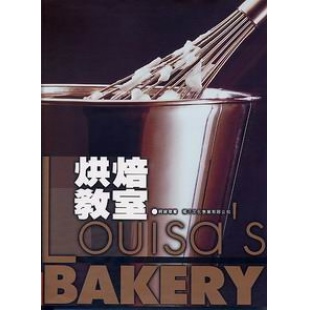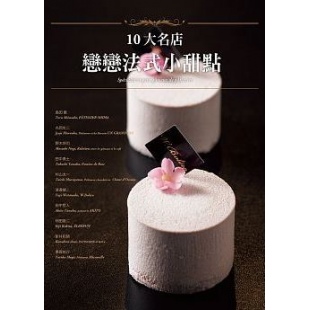- 相关推荐
浏览历史
Macaron révèle ainsi les macarons autour des saveurs classiques, café, chocolat, framboise. des saveurs fétiches, Ispahan - biscuit macaron crème au litchi à la rose, compote de framboise - Satine - biscuit macaron, crème mousseline au cream cheese, compote d'oranges et fruits de la passion - Carrément chocolat - biscuit macaron, ganache au chocolat ultra amer, éclats de fèves de cacao, gelée de chocolat amer - ses réactions audacieuses sur mesure, Ketchup, Mandarine et baies roses, Thé jasmin pour la maison Jean Patou et les macarons d'exception, Truffe blanche, Truffe noire, Vinaigre balsamique.
A la fois technique et esthétique, l'ouvrage détaille chaque recette avec précision et pédagogie et décrit les gestes des étapes essentielles de leur réalisation photographiés pas à pas. Il reprend les méthodes de fabrication des ateliers de production de macarons de Pierre Hermé et les techniques enseignées au sein de l'Atelier Pierre Hermé de formation à la haute-pâtisserie à l'Ecole Ferrandi.
Everyone who has ever tried to make macarons will know that it is not as simple as it might look. Like Pierre Hermé’s famous macarons, it would be difficult for any macaron book to surpass this one. There are 57 macaron recipes, each one very detailed. Something which is extremely helpful for both macaron newcomers and veterans: photo-illustrated step-by-step instructions for making shells and fillings. Although this book is in French, the recipes and instructions are clear enough that most macaron lovers would find a solution to the language barrier.
FRENCH TRANSLATION
Si vous avez déjà essayé de faire des macarons, vous savez sans doute que la tâche est bien plus difficile qu’elle n’en a l’air. Tout comme les macarons célèbres de Pierre Hermé, son livre sur ces petits délices est sans égal. Cette œuvre contient pas moins de 57 recettes pour macarons, chacune bien détaillée pour aider tant ceux qui savent déjà en faire, que ceux sans aucune expérience. Les photos illustrent chaque étape dans la préparation des coquilles et des garnitures. Bien que ce livre soit rédigé en langue française, les recettes sont suffisamment claires d’ailleurs, même les amateurs de macarons non-francophones pourraient surmonter la barrière de la langue.
Full review
There are dog people and cat people. There are beer people and wine people. And I guess there are Ladureé people and Pierre Hermé people. When it comes to macarons, of course.
These little French delicacies (to call them “biscuits” would be an insult) were reintroduced by the famous Ladureé patisserie and there are still long queues in front of their stores in Paris and London. Ladureé is traditional in terms of macaron flavours, colours, packaging. They are also extremely secretive about their signature product. There are Ladureé cookbooks, but no, you will not find macarons in them. A lot of people claim that Ladureé macarons are the best. I don’t. I am a Pierre Hermé person.
If Ladureé reintroduced macarons and made them world famous, Pierre Hermé (PH) reinvented them. Daring flavours (some of them perhaps too daring, like foie gras or beluga caviar), metallic colours, flavour compositions with jelly inserts instead of plain buttercream or chocolate ganache flavours. I also prefer the structure of PH macarons. Very thin, delicate crust and a very soft (not chewy) interior. Perfect! The best thing about PH is that he is not jealously hiding his secrets but shares them in his books. The newest one is dedicated to macarons.
The book begins with an interview with the author and then explains a few most important tips and tricks of the trade. What follows is extremely helpful for both macaron newcomers and veterans – photo-illustrated step-by-step instructions for making macaron shells and ganache fillings. Recently, PH switched to the Italian meringue method in his published recipes and this is the only method explained in the book. Since the book is dedicated to a single topic, I would expect at least a comment on the other methods (if you attend the 750 € PH class on macarons, they would also teach you French and Swiss meringue methods). PH also started using a fan oven (not a classical approach). Again, there is no discussion about other alternatives. PH claims that using his recipe, even his 8-year-old daughter was able to make perfect macarons. Perhaps in his oven, with his ingredients and supervision. Everyone who ever tried to make macarons will know that it is not as simple as it might look. In a perfect book about macarons, there should also be some discussion about the factors that affect the final outcome.
There are 57 macaron recipes in the book. Many of them are taken from the “PH 10″ book. If you were willing to spend 135 € for that one and you love macarons, then 30 € won’t be too much of an expense for this one. And you will get new recipes as well.
The recipes are divided into five sections: classics, fetish, signature, made-to-order and exceptions. That makes it quite difficult to find a certain recipe. Perhaps a division by leading flavour would be better – it would be easier to find the “apricot and pistachio” than “Arabesque”.
The recipes are very detailed. Every single one. Which is great if you tear one page from the book and take it with you to a lonely island to make macarons. But it gets quite boring if you are reading through exactly the same (more than one page long) instructions about how to bake the macaron shells. In general, I hate books with recipes like “make 1.5 batch of the dough from page 338, than make a cream using the recipe on page 295 but substituting apples with oranges and bake according to the procedure described in appendix A1″, but 57 copies of the same recipe is really too much. If the publisher wanted the book to have a certain thickness, they could have added more flavours (which PH surely has) and really made the book a macaron encyclopedia.
The photos are great and it is interesting to see how they were able to photograph the same motif 57 times and still made it look interesting.
If you live in France or visit Paris on a regular basis, the list of suppliers will be helpful. Otherwise, you are on your own. Although PH uses some special ingredients (colours, chocolates, etc., it will not be too difficult to substitute what you can get in your store).
 |
 |
 |
 |
 |
 |
So: to buy it or not? Like PH macarons, it will be difficult for any macaron book to surpass this one. It looks nice and contains a lot of very helpful information. You don’t speak French? No problem. The recipes and instructions are so basic that you should have no problem even by using some internet translator. The book also teaches you how to replicate PH’s most famous creations. And at 30 € for the book and more than 2 € for a single PH macaron, you will break even with the first successful batch coming from your oven!


 购物车结算
购物车结算  书籍
书籍 原料
原料 器具
器具 包装
包装
 收藏商品
收藏商品 分享
分享 加入购物车
加入购物车















